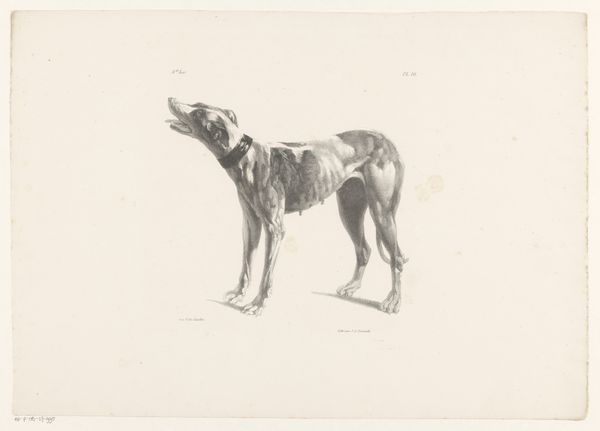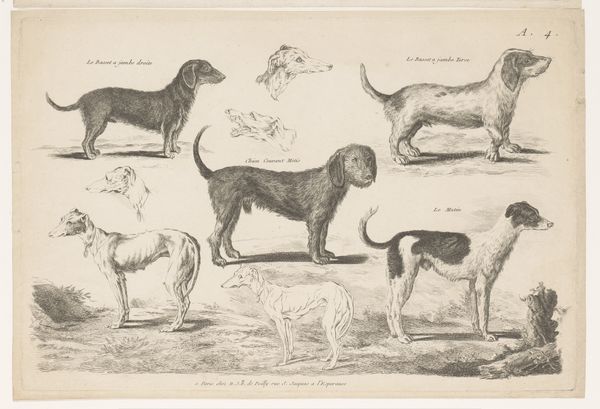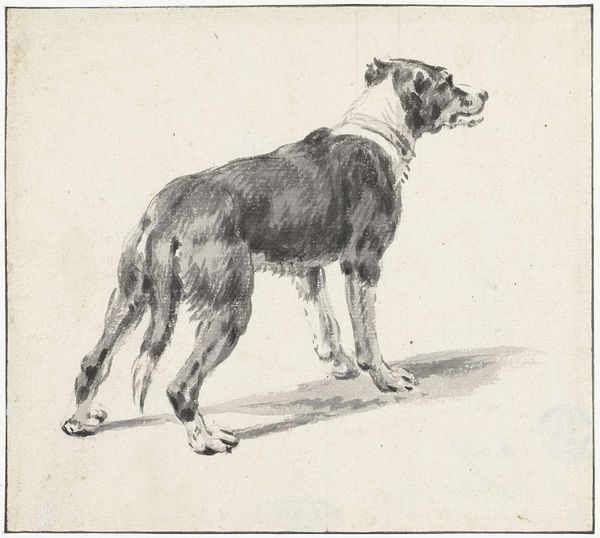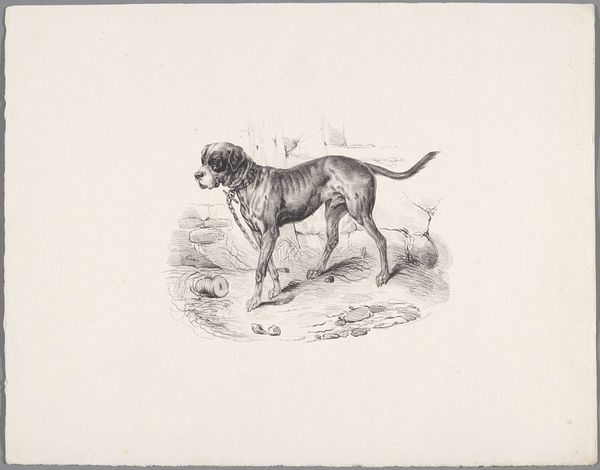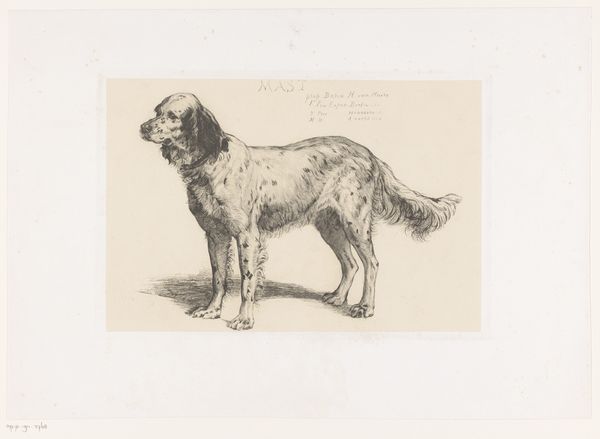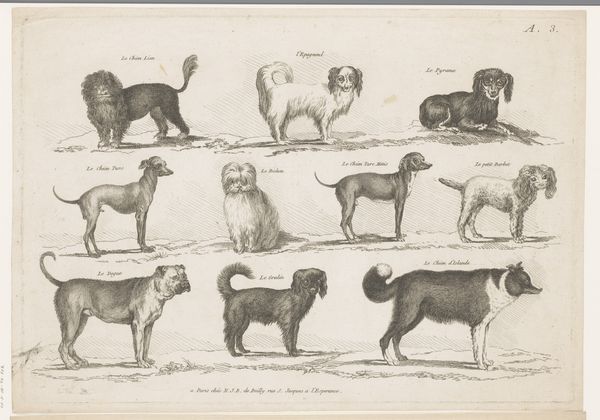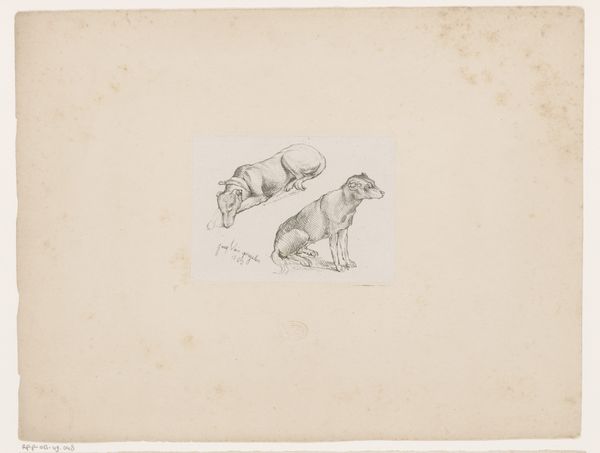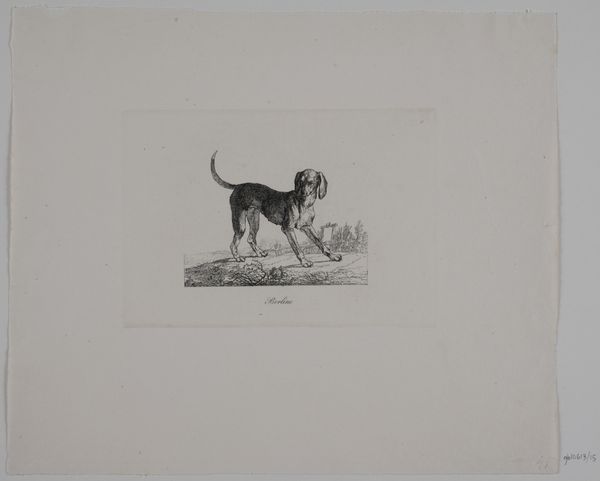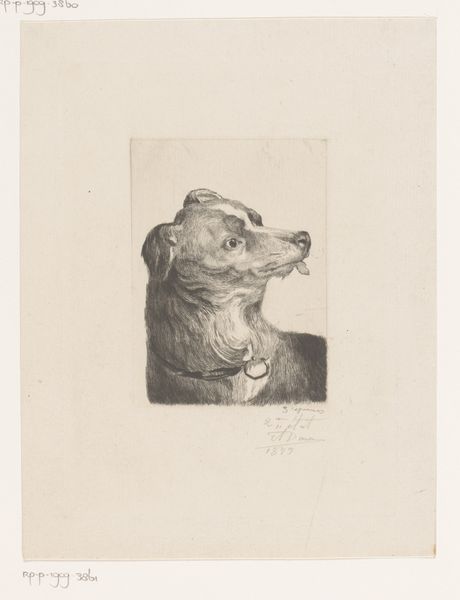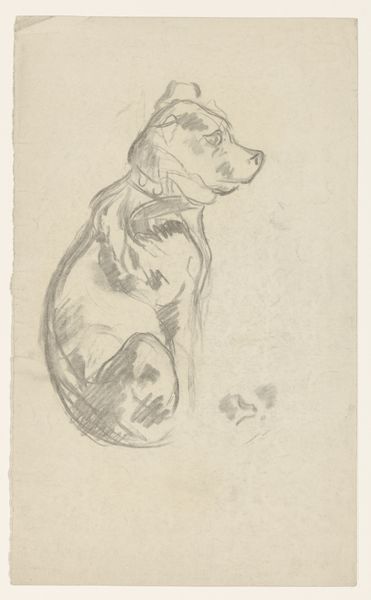
drawing, graphite
#
portrait
#
drawing
#
animal
#
dog
#
figuration
#
graphite
#
academic-art
#
realism
Dimensions: height 460 mm, width 335 mm
Copyright: Rijks Museum: Open Domain
Curator: Welcome. Before us is "Three Dogs", a graphite drawing created sometime between 1820 and 1833 by Roelof van der Meulen. Editor: Right off, it's an arresting sketch. Sparse, almost haunting in its simplicity. The dogs seem caught between stillness and anticipation, a collective portrait of quiet watchfulness. Curator: Indeed. Note the composition: the animals arranged as isolated studies upon the paper. The tonal gradations achieved with graphite create a palpable sense of form, imbuing each canine with its own distinct character. It echoes, in some respects, the academic approach to portraiture, but applied to the animal form. Editor: You can practically feel the weight of the graphite, those subtle shifts in shade hinting at muscle and bone. I wonder, though, about their poses. There’s a tension there, an expectation of something about to happen. And what is the function of isolating them so strikingly? Curator: That tension arises from van der Meulen's mastery of realism; the anatomical accuracy is compelling, almost clinical. I interpret the isolation as an opportunity for focused observation. We are asked to study each animal's structure and form independently. This method reflects the scientific rigor typical of natural history illustrations from this period. Editor: Perhaps. Or maybe it speaks to something deeper. Loneliness? An unspoken connection that is missed by being placed individually, in different parts of the scene? It makes you wonder about the unwritten story that brings those hounds together. I can easily imagine them breaking free from their drawn boundaries to embark on some adventure. Curator: An evocative notion. Consider however the broader theme here of figuration through meticulous draftsmanship and attention to detail rather than to the background. We observe these studies more so as aesthetic investigations, presented by an astute master of graphite drawing. Editor: Maybe the greatest art lives between an "objective" formal rendering, as you rightly suggest, and the narrative that forms, as we look and think, through and because of our feelings about it. Van der Meulen, regardless of the intended purpose here, gives us that opportunity. Curator: A harmonious balance indeed.
Comments
No comments
Be the first to comment and join the conversation on the ultimate creative platform.

